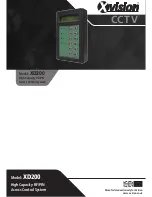
Beginners’ manual Series xx7│Document 26/835; Version E 2│22.04.2005
Saia-Burgess
Controls AG
Introduction to hardware confi guration
Fundamentals of hardware configuration
2-1
2
2.
Fundamentals of hardware configuration
This manual provides an overview of hardware configuration with the xx7 I/O Builder
and the Siemens STEP
®
7 software.
2.1
Introduction to hardware configuration
Configuring
By “configuring”, we mean the allocation of PCD CPUs (incl. expansion devices, I/O
modules and interface modules) in a station window. CPUs and expansion devices
are represented by a configuration table that supports a fixed number of pluggable
modules, just like the “real” CPU.
In the configuration table, the xx7 I/O Builder automatically assigns an address to
each I/O module. You can change the addresses of I/O modules.
A hardware data block is then generated, which can be loaded into the PCDs with
the aid of STEP
®
7. You can import the configuration into STEP
®
7 as often as you like,
modify it if necessary, and load it into one or more existing systems.
At a Stop→Run transition in the CPU, the loaded configuration will be analyzed and
applied.
Parameterizing
By “parameterizing”, we mean:
• Setting properties for parameterizable modules for the central assembly and for a
network. Example: a PCD is a parameterizable module; the cycle monitoring time is
a parameter that you can set.
• Setting Bus parameters and DP Master and Slave parameters for a Master system
(PROFIBUS-DP).
You can use the xx7 I/O-Builder to parameterize SAIA-specific functions of CPUs and
communication modules (e.g. compiler functions, webserver serial interfaces etc.).
A Configuration Data Block (CDB) is then generated, which can be loaded into the
PCDs with the aid of STEP
®
7.
General CPU functions (cycle time monitoring, MPI addresses etc.) and communi-
cation settings (Profibus, TCP/IP communication etc.) are handled by the hardware
configurator or by NetPro under STEP
®
7.
Most parameters are read in and analyzed after a Power On of the CPU.








































